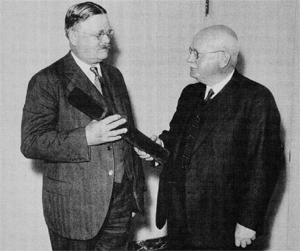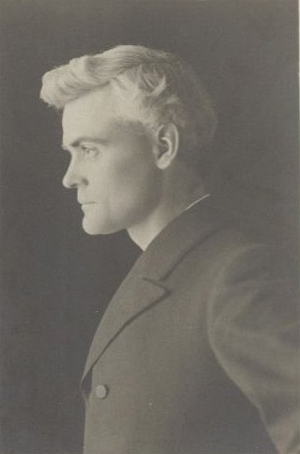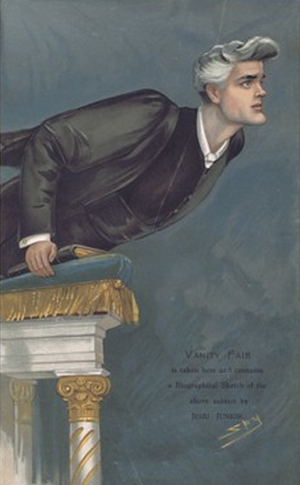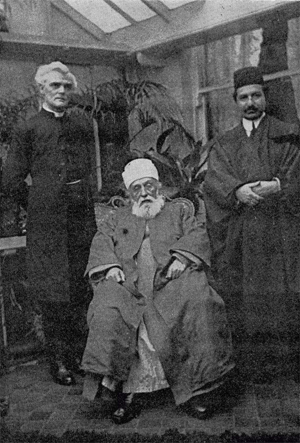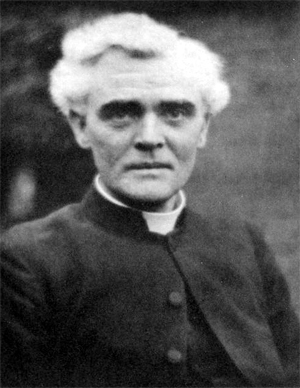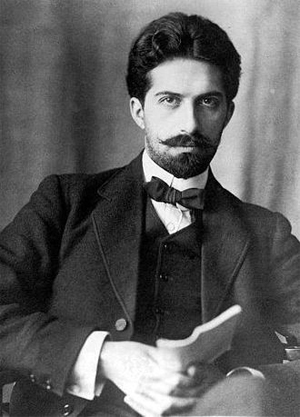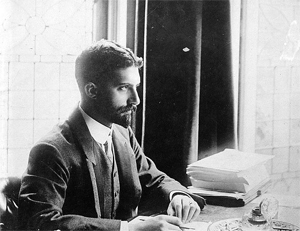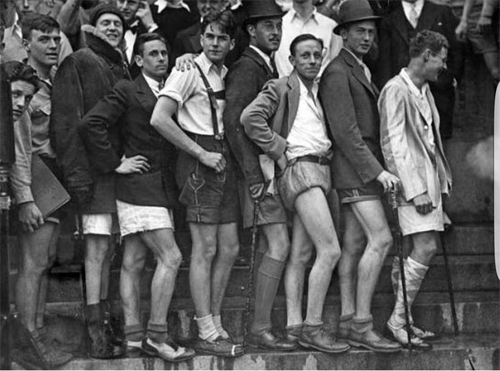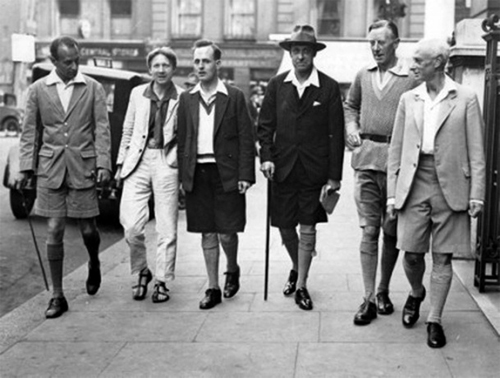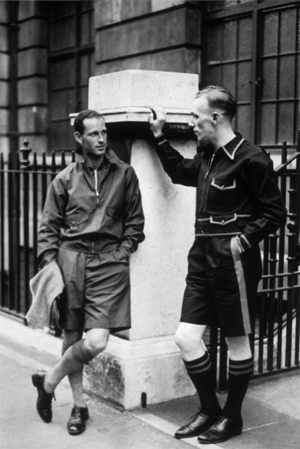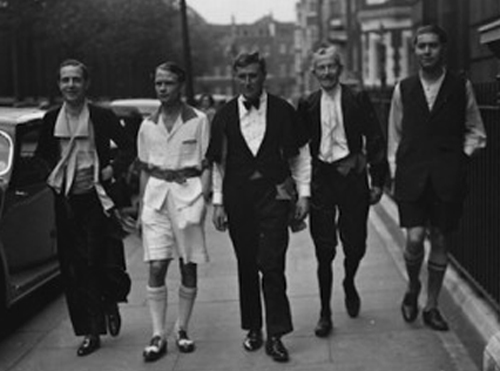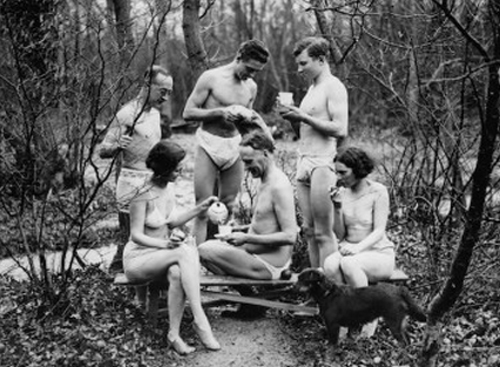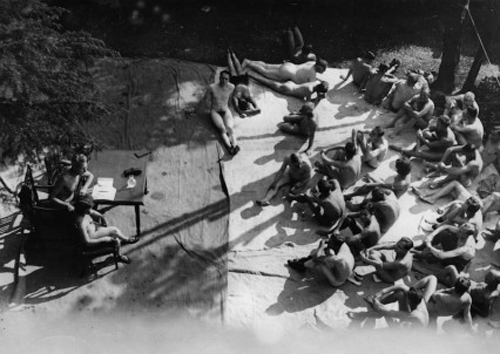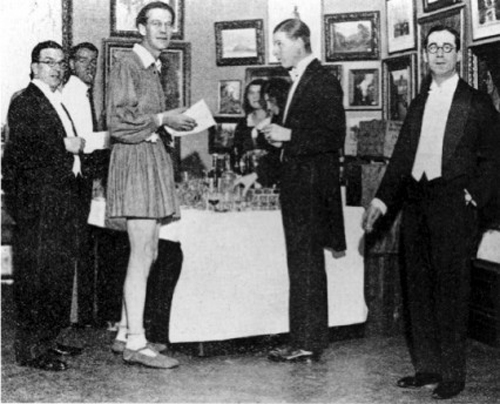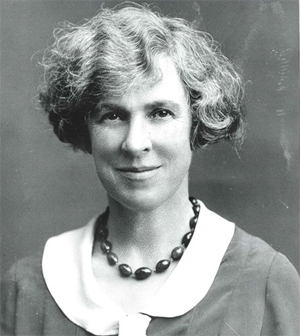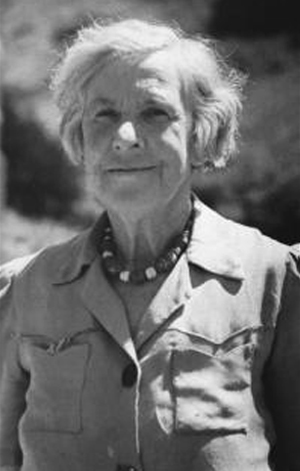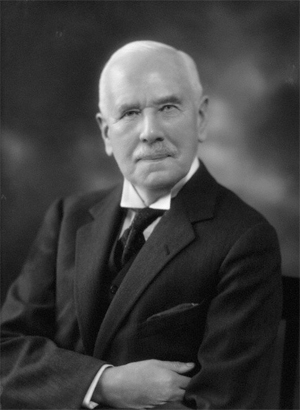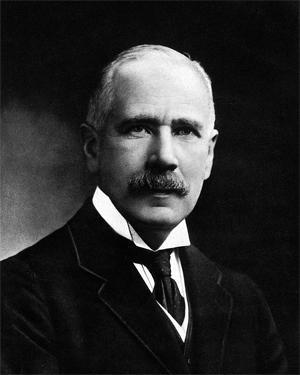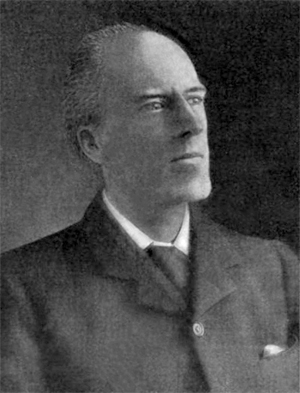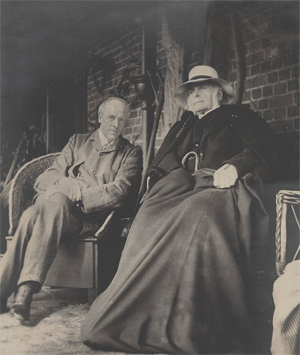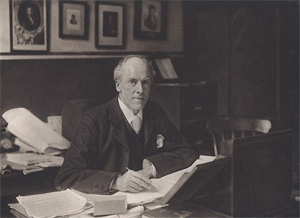Ernst Rüdin: Hitler’s Racial Hygiene Mastermind
by Jay Joseph and Norbert A.Wetzel
Article in Journal of the History of Biology
November 2012
JAY JOSEPH
P.O. Box 5653, Berkeley, CA 94705-5653, USA
E-mail: [email protected]
NORBERT A. WETZEL
The Center for Family, Community, and Social Justice, Inc.,
166 Bunn Dr., Suite #105, Princeton, NJ 08540, USA
E-mail: [email protected]
Abstract. Ernst Rudin (1874–1952) was the founder of psychiatric genetics and was also a founder of the German racial hygiene movement. Throughout his long career he played a major role in promoting eugenic ideas and policies in Germany, including helping formulate the 1933 Nazi eugenic sterilization law and other governmental policies directed against the alleged carriers of genetic defects. In the 1940s Rudin supported the killing of children and mental patients under a Nazi program euphemistically called ‘‘Euthanasia.’’ The authors document these crimes and discuss their implications, and also present translations of two publications Rudin co-authored in 1938 showing his strong support for Hitler and his policies. The authors also document what they see as revisionist historical accounts by leading psychiatric genetic authors. They outline three categories of contemporary psychiatric genetic accounts of Rudin and his work: (A) those who write about German psychiatric genetics in the Nazi period, but either fail to mention Rudin at all, or cast him in a favorable light; (B) those who acknowledge that Rudin helped promote eugenic sterilization and/or may have worked with the Nazis, but generally paint a positive picture of Rudin’s research and fail to mention his participation in the ‘‘euthanasia’’ killing program; and (C) those who have written that Rudin committed and supported unspeakable atrocities. The authors conclude by calling on the leaders of psychiatric genetics to produce a detailed and complete account of their field’s history, including all of the documented crimes committed by Rudin and his associates.
The purpose of this article is to examine the career of the Swiss-German racial hygienist and psychiatric genetics founder Ernst Rudin (1874–1952), and to document the crimes he both supported and committed in Germany during the Nazi period (1933–1945). We then assess the manner in which contemporary psychiatric genetic researchers have written about -– or have failed to write about –- the crimes committed by Rudin and his associates. Following this discussion, we present translations of two documents co-authored by Rudin and racial hygienics founder Alfred Ploetz (1860–1940) in a 1938 edition of Archiv fur Rassen-und Gesellschaftsbiologie (Archive for Racial and Social Biology; Ploetz and Rudin, 1938a, b). To the best of our knowledge these documents have not been translated in any previous English language publication.
Psychiatric Genetics and Racial Hygiene
Ploetz and Rudin were among the founders of the German Society for Racial Hygiene (Gesellschaft fur Rassenhygiene) in 1905. The aims of the German racial hygiene movement were similar to the eugenics movements in other countries, including the United States, although the term ‘‘race’’ (Rasse) implied a stronger racial or volkisch aspect of eugenics. German racial hygienists and other eugenicists believed that humans can be ‘‘improved’’ by selective breeding to eradicate ‘‘undesirable’’ traits in the population. They argued that psychiatric disorders, and traits such as criminality, alcoholism, and hereditary ‘‘feeble-mindedness’’ (angeborener Schwachsinn) are caused mainly by hereditary factors, and can be bred out of the population for the benefit of future generations. The Archiv first appeared in Germany in 1904 and became the official journal of the Society for Racial Hygiene. After the Nazi seizure of power in the first part of 1933, it became an official organ of the Nazi’s Reich Committee for Public Health (Weindling, 1989, p. 500), with Rudin continuing as the co-Editor.
Rudin developed the psychiatric genetics field in the early twentieth century. During that period he was working with the founder of modern psychiatry Emil Kraepelin, first in Heidelberg, and then following Kraepelin to Munich in 1907 (Weber, 1996). Rudin and his racial hygienicist colleagues were tireless advocates of programs aimed against the carriers of a presumed ‘‘hereditary taint’’ (erbliche Belastung) well before the Nazi seizure of power in 1933. Lacking any family or twin studies, Rudin called for the eugenic sterilization of chronic alcoholics as early as 1903, which ‘‘marked the beginning of a life-long crusade for sterilization of the degenerate’’ (Weindling, 1989, p. 186).
The Nazi takeover provided new support for Rudin’s ‘‘crusade,’’ and he played a major role in creating and implementing the 1933 Nazi ‘‘Law for the Prevention of Genetically Diseased Offspring’’ (Gesetz zur Verhutung erbkranken Nachwuchses). This law provided for the compulsory eugenic surgical sterilization of people diagnosed with ‘‘genetic’’ conditions such as feeble-mindedness, schizophrenia, manic-depressive insanity, genetic epilepsy, Huntington’s chorea, genetic blindness or deafness, or severe alcoholism. Rudin was a co-author of the official commentary summarizing the alleged scientific justification for the law (Gutt et al., 1934).1
The law created a massive program of compulsory eugenic sterilization and led to the establishment of roughly 1,700 hereditary health courts (Erbgesundheitsgerichte) throughout Germany (Proctor, 1988). Approximately 400,000 Germans were forcibly sterilized under the law between 1934 and 1939, primarily on the basis of being labeled ‘‘feeble-minded’’ or ‘‘schizophrenic.’’ The sterilization mortality rate was around 0.5%, meaning that perhaps 2,000 people died from the operation (Proctor, 1988).
Rudin and his close psychiatric geneticist associates at the Genealogic-Demographic Department of the German Research Institute for Psychiatry in Munich, such as Hans Luxenburger and Bruno Schulz, played a major role in establishing, popularizing, and performing research in support of the sterilization law (Joseph, 2004, 2006; Lewis, 1934; Luxenburger, 1934; Rudin, 1934; Schulz, 1934, 1939). In 1934, the Kaiser-Wilhelm-Institute produced a list of 15 ‘‘eminent eugenicists in Germany,’’ with Rudin and Luxenburger appearing on this list (Thomalia, 1934, pp. 141–142). Rudin received numerous awards for his work in the Nazi era, including the prestigious Goethe Medal of Arts and Sciences in 1939 from the Reich Ministry of the Interior. In 1944, Rudin received the Adlerschild des Deutschen Reiches medal (Eagle Shield of the German Reich) bearing the Nazi eagle from Hitler, and was praised as being a ‘‘pathfinder in the field of hereditary hygiene’’ (Weinreich, 1946, p. 33).
Like Rudin, Luxenburger was a strong supporter of eugenic measures well before the Nazi seizure of power in 1933 (see Burleigh, 1994; Joseph, 2004, pp. 34–39; Luxenburger, 1931a, b). As Weiss observed in her detailed examination of Rudin’s Institute, ‘‘all of its members were strong supporters of eugenics during the Weimar years’’ (1919–1933; Weiss, 2010, p. 133). In 1931, Luxenburger wrote that sterilization would ‘‘considerably contain’’ but not ‘‘fully prevent the transmission of recessive hereditary properties.’’ Nevertheless, he supported sterilization because ‘‘it is impossible to see why one should sit back and do nothing only because a radical eradication of degenerate hereditary properties is still impossible today’’ (quoted in Burleigh, 1994, p. 41). After the Nazi takeover, Luxenburger’s definition of ‘‘feeble-minded’’ children deserving to fall under the sterilizer’s knife included those having great difficulty in elementary school and those ‘‘who fail in life’’ (Weiss, 2010, p. 144). When asked whether the sterilization law would reduce the number of people available to perform important menial tasks, Luxenburger replied, ‘‘even after sterilization there will be enough hereditary feeble-minded individuals to serve as coolies’’ (quoted in Weiss, 2010, p. 144).
After the Nazi seizure of power, researchers and students from other European countries came to Munich to study under Rudin and his associates at the Genealogical-Demographic Department. According to David Rosenthal, a leading American supporter of psychiatric genetics and an admirer of Rudin’s scientific work, ‘‘From this institute emerged all of the pioneering psychiatric geneticists’’ (Rosenthal, 1971, p. 7).
Rudin and ‘‘Euthanasia’’
In the late 1930s the Nazi regime moved beyond compulsory eugenic sterilization and instituted a secret plan to kill mental patients and other ‘‘defectives,’’ ‘‘useless eaters,’’ and ‘‘incurables.’’ This program, code named ‘‘T4’’ and euphemistically referred to by the authorities as ‘‘euthanasia,’’ led to the murder of 70,000 people by gas, lethal injection, starvation, and other methods in the first phase between 1939 and 1941 under the direction of the government and leading doctors and psychiatrists (Lifton, 1986; Proctor, 1988). Many more were killed between 1939 and 1945 in further actions both in Germany and the occupied territories. Some have estimated that 200,000 people were killed in the program (Weiss, 2010), while other estimates run as high as 300,000 (Peters, 2001). Proposals to institute a eugenic killing program in the United States were openly debated in a 1942 edition of the official journal of the American Psychiatric Association, The American Journal of Psychiatry (Joseph, 2005; Kennedy, 1942).
Although there is no evidence that Rudin played a major role in initiating the ‘‘euthanasia’’ program, it is beyond question that he helped implement and justify this program of killing (Roelcke, 2000, 2012;Weiss, 2010). According to Rudin’s biographer Matthias Weber, in internal memorandums Rudin discussed ‘‘euthanasia’’ as a type of ‘‘therapeutic reform’’ (Weber, 1996, p. 329). The German historian of medicine Volker Roelcke has played an important role in documenting Rudin’s involvement in the euthanasia program, and has criticized what he saw as Weber’s (1993) incomplete reporting (including poorly documented claims) of Rudin’s role in the killing program (Roelcke, 2006, 2012). In 1942 Rudin wrote about the eugenic importance of ‘‘distinguishing which children could, already as children, be clearly categorized as so valueless and worthy of elimination that…they could be recommended for euthanasia in their own interest and that of the German people’’ (quoted in Weiss, 2010, p. 179).
Roelcke has documented Rudin’s support for the killing of children at the Psychiatric Department of the University of Heidelberg in 1943–1945 (Roelcke, 2000, 2006, 2012; Roelcke et al., 1998). He has shown that Carl Schneider and Rudin’s associate Julius Deussen ‘‘played a leading role in the research on children in the context of the euthanasia program’’ (Roelcke, 2006, p. 86). This research included the killing of children in order to ‘‘systematically correlate clinical with post-mortem and histopathological data.’’ Roelcke has documented that Rudin ‘‘supported the research efforts of Schneider and Deussen in various ways, among other things with funds from the budget of his own institute in Munich’’ (Roelcke, 2006, p.87). The research carried out by Deussen and Schneider attempted to find clinical, genealogical, and/or laboratory criteria to differentiate between hereditary and acquired conditions. At least 21 of the 52 children studied under the program initiated and supported by Rudin were killed so that their brains could be examined (Roelcke, 2000, 2012).
The brains of other murdered ‘‘euthanasia’’ victims were sent to Rudin’s Munich institute for evaluation and research (Weiss, 2010, p. 183). According to Weber, ‘‘Rudin considered the broadening of the criteria for killing handicapped newborns to be a scientific issue of importance to the war effort’’ (Weber, 2000, p. 255). In 1944, Rudin considered publishing an article in the Archiv legitimizing euthanasia based on ‘‘thoroughly investigated children’’ (quoted in Weiss, 2010, p. 179). Clearly, at this point Rudin still believed that Germany would win the war and that open support for euthanasia in scientific journals would become acceptable after the German victory.
Rudin and his collaborators drafted a memorandum on the Nazi T4 ‘‘euthanasia’’ killing program, discussing ways that doctors and others could justify the killing. According to the memorandum:
Even the euthanasia measures will meet with general understanding and approval, as it becomes established and more generally known that, in each and every case of mental disease, all possible measures were taken either to cure the patients or to improve their state sufficiently to enable them to return to work which is economically worthwhile, either in their original professions or in some other occupation. (quoted in Muller-Hill, 1998, p. 46)
And in a 1942 letter to the Reich Research Council discussing psychiatric genetics and the conditions of war, Rudin wrote,
We have no interest in preserving the lives of incurable and ruinous victims of heredity, nor do we have any interest in the propagation of individuals who are carriers of the genetic dispositions necessary for the development of severe hereditary diseases. We do however have an interest in the case of the latter individuals to save what can be saved, at least on a case-by-case basis, by means of timely interventions in pathogenesis and during the course of the disease, in order to at least preserve their utility to society. (quoted in Ritter and Roelcke, 2005, p. 268)
Similar to the selection process at the Nazi’s Auschwitz concentration camp, Rudin condemned to death the ‘‘incurable and ruinous victims of heredity’’ unless they were able-bodied enough to contribute to the war effort or to work in slave labor camps. In the words of a pair of contemporary schizophrenia researchers, ‘‘The sterilization and murder of hundreds of thousands of patients with schizophrenia and other psychiatric disorders in Nazi Germany between 1934 and 1945 was the greatest criminal act in the history of psychiatry’’ (Torrey and Yolken, 2010, p. 31).
Indeed, as the contemporary German psychiatric genetic researcher Peter Propping concluded, the leaders of Rudin’s Munich school were responsible for moving along the ‘‘slippery slope’’ from sterilization to killing2:
When the National Socialists came to power in Germany in 1933, the protagonists of the Munich school helped guide psychiatric genetics along the slippery slope from the sterilization of psychiatric patients to their deaths in an organized euthanasia program. Ernst Rudin was a prominent protagonist of the German racial hygiene movement, his research program as well as his political activities being guided by the idea of a ‘‘healthy race.’’ (Propping, 2005, p. 3)
According to Roelcke,
The aim of re-structuring society according to the laws of biology was the guiding principle motivating all of Rudin’s research and political activities. He and most of his staff were in one way or another involved in Nazi mental health policy, including active support of the systematic patient killings (‘‘euthanasia’’), and in research aimed at finding scientifically valid criteria for distinguishing between those worthy for procreation, or indeed worthy to live, and those supposedly unworthy. (Roelcke, 2004, p. 477)
Historians have pointed out that in addition to the eugenic and ‘‘racial purification’’ aspects of the euthanasia program, other motives included economic factors and the need to clear out hospitals and asylums in the interest of the war effort (Germany invaded Poland on September 1, 1939). However, although the euthanasia program was carried out under the conditions of war, from another perspective one could argue that, much like the Holocaust itself, it was carried out under the cover of war.
Rudin’s anti-Semitism was also in line with the Nazi leaders he so willingly collaborated with and even inspired. As seen in two 1938 articles he co-authored with Ploetz (which we have translated below) and elsewhere, Rudin supported every policy and crime directed against the Jewish people, which is confirmed in a 1942 edition of the Archiv. Referring to the ‘‘fight against parasitic alien races such as the Jews and Gypsies’’ well after Kristallnacht and at a time when the Holocaust was well underway, Rudin wrote,
The results of our science had earlier attracted much attention (both support and opposition) in national and international circles. Nevertheless, it will always remain the undying, historic achievement of Adolf Hitler and his followers that they dared to take the first trail-blazing and decisive steps toward such brilliant race-hygienic achievement in and for the German people. In so doing, they went beyond the boundaries of purely scientific knowledge. He and his followers were concerned with putting into practice the theories and advances of Nordic race-conceptions… the fight against parasitic alien races such as the Jews and Gypsies… and preventing the breeding of those with hereditary diseases and those of inferior stock. (quoted in Muller-Hill, 1998, p. 67)
In the same article, Rudin wrote favorably about Nazi racial laws, which led to a ‘‘by now progressed elimination of Jewish influence and especially to the prevention of further intrusions of Jewish blood into the German gene pool.’’ Like Hitler, he saw the war as being caused by ‘‘Jewish-plutocratic and Bolshevik directed powers’’ (Rudin, 1942, pp. 321–322; see also Joseph, 2004).
Questionable Premises: Then and Now
German psychiatric geneticists sought to provide alleged scientific evidence in support of social and political policies aimed at curbing the reproduction of people they targeted as harboring ‘‘hereditary taint,’’ which they believed posed a grave danger to society and could lead to societal and racial degeneration (Peters, 2001; Roelcke, 2006; Schulze et al., 2004). However, although contemporary psychiatric genetic researchers usually reject eugenic ideas and programs (while promoting genetic counseling), they may be just as mistaken as Rudin and his colleagues in their belief that hereditary factors play an important etiological role in the major psychiatric disorders (Joseph, 2004, 2006, 2012).
The reason is that contemporary researchers -– in the context of the forty-year failure to discover the genes that they believe cause the major psychiatric disorders (Collins et al., 2012; Gershon et al., 2011; Joseph, 2011, 2012; Joseph and Ratner, in press; Plomin, 2012) -– rely on the same two environmentally confounded research methods used by Rudin and his colleagues: psychiatric family studies and twin studies. Then as now, critics have argued that both family studies and twin studies are unable to disentangle the potential influences of genes and environment, and therefore prove nothing about genetic influences on psychiatric disorders and psychological traits (Charney, 2008a, b, 2012, Joseph, 2004, 2006, 2010, 2012; Lewontin et al., 1984). In addition, critics have argued that psychiatric adoption studies, which have been performed since the 1960s, contain their own set of invalidating methodological problems and environmental confounds (Boyle, 2002; Cassou et al., 1980; Joseph, 2004, 2006, 2010; Pam, 1995; Lewontin et al., 1984; Lidz, 1976; Lidz and Blatt, 1983; Lidz et al., 1981).
The main product of Munich school research was the ‘‘empirical genetic prognosis’’ (empirische Erbprognose), which involved calculating the probability that (presumably hereditary) psychiatric disorders would eventually appear in the biological relatives and descendants of people diagnosed with these disorders. These calculations, which were based mainly on family studies, produced age-corrected ‘‘morbidity risk’’ (MR) percentage figures for various groups of relatives biologically related to the diagnosed ‘‘Proband.’’ Rudin had developed this method for his schizophrenia family study, published in 1916 (Rudin, 1916). Much of the work of Rudin, Luxenburger, Schulz and their colleagues in the Nazi era involved calculating such probabilities in the service of the sterilization law and other racial hygienic measures. For example, the researchers found that the age-corrected schizophrenia morbidity risks among the parents and offspring of schizophrenia patients were higher than the rate expected in the general population, and concluded that these elevated rates were caused by genetic factors. In these studies the researchers did not diagnose relatives blindly, did not use control groups, and used vague and differing definitions of schizophrenia and other disorders (Gottesman et al., 1987).
However, like their fellow eugenicists in the United States who based many of their theories and policy recommendations on allegedly ‘‘tainted family lines’’ such as the ‘‘Jukes’’ and the ‘‘Kallikaks,’’ on a purely scientific level Rudin and his Munich colleagues made the crucial error of assuming that hereditary factors explain the finding that psychiatric disorders tend to ‘‘run in the family.’’ As most contemporary psychiatric genetic and behavioral genetic researchers now understand, traits and disorders can aggregate in families for environmental (nongenetic) reasons because family members share a common environment as well as common genes. As one example, a leading group of psychiatric genetic researchers recognized in 1994 that the familial resemblance or aggregation of a trait or disorder ‘‘can occur because of shared genes, shared environment or a combination of the two’’ (McGuffin et al., 1994, p. 30; other researchers recognizing that family studies cannot disentangle potential genetic and environmental influences include Barondes, 1998; Bouchard and McGue, 2003; Faraone et al., 1999; Kendler, 1988; Kety et al., 1968; Plomin et al., 2008; Rosenthal, 1970).
Empirical predictions based on family studies, therefore, do not prove anything about genetics, and the belated recognition of this fact by the field of psychiatric genetics suggests that the most generous conclusion one can reach about Munich school research is that it was based on questionable science, if it was science at all, and was performed and promoted in the service of eugenics and right-wing political programs, the desire of institute leaders to maintain funding and the support of the Nazi regime, and their pre-existing beliefs about the importance of heredity.
Rudin’s daughter Edith Zerbin-Rudin became a psychiatric genetic researcher in Germany in the decades following World War II, first continuing her father’s work on a greatly reduced scale alongside Schulz at the renamed Max Planck Institute for Psychiatry in Munich, and then heading the department after Schulz’s death in 1958 (Zerbin-Rudin and Kendler, 1996). In a 1972 article on the genetics of schizophrenia, Zerbin-Rudin observed that although up to the end of the war most researchers accepted empirical genetic prognoses based on family study data as ‘‘unequivocal proof’’ that schizophrenia and other psychiatric disorders and traits were caused by heredity, ‘‘the interpretation has undergone change’’:
Until about 30 years ago [roughly the mid-1940s], the clear increase in morbidity risk with the proximity of blood kinship to a schizophrenic was considered unequivocal proof of a hereditary factor. Later, however, it was reasoned that family members become ill more frequently only because their environment is more alike than that of nonconsanguineous persons. (Zerbin-Rudin, 1972, p. 47)
Although Zerbin-Rudin consistently defended her father’s work and reputation (see Zerbin-Rudin and Kendler, 1996; Muller-Hill, 1998, pp. 130–133), and although she believed that the schizophrenia adoption studies published in the 1960s suggested that the familial aggregation of schizophrenia is ‘‘at least partly attributable to genetic factors’’ (p. 47), her assessment confirms that the conclusions of Rudin and his Munich colleagues were wrong insofar as they interpreted the results of family studies as constituting proof that hereditary factors cause (or are the main cause of) psychiatric disorders, ‘‘feeble-mindedness,’’ and so on. The ‘‘unequivocal proof’’ they produced, which contributed to the sterilization and killing of (estimating conservatively) hundreds of thousands of people, was in fact no proof at all. Indeed, although the great majority of people labeled ‘‘schizophrenic’’ in Nazi Germany were either sterilized or killed, postwar studies show a high incidence rate of new schizophrenia cases in Germany (Torrey and Yolken, 2010).
Some might object that our brief assessment of Rudin’s scientific work rests on the flawed method of reading research results from later decades back into the past. The main point, however, is that we condemn Rudin and his associates not for the conclusions they reached on the basis of their results, but rather for what they did to their fellow human beings on the basis of their conclusions. We do criticize the science, but the present analysis would not have been necessary had Rudin and his colleagues done nothing more than publish scientific articles concluding that genes play a major role. Rudin was an internationally known scientist who used his authority to support severely repressive political programs masquerading as ‘‘science,’’ and was a doctor who personally played a role in killing adults and children (‘‘patients’’).
Contemporary Revisionist Histories of Rudin and German Psychiatric Genetics
Teo and Ball (2009) discussed the ‘‘revisionist’’ historical accounts written by some twin researchers, who usually fail to mention that their discipline has its origins in eugenics and German racial hygiene (Joseph, 2004). Twin research was an area of focus at Rudin’s Munich institute as well being the specialty of Otmar von Verschuer of Germany’s Kaiser Wilhelm Institute Human Genetics Division, and later the Frankfurt Institute for Hereditary Biology and Racial Hygiene. Verschuer was one of the world’s leading twin researchers in the 1930s (Joseph, 2004; Newman et al., 1937), and also played a major role in providing scientific justification and support for the Holocaust and was an accomplice to the murder of twins at Auschwitz for ‘‘scientific’’ purposes (Ehrenreich, 2007; Lifton, 1986; Muller-Hill, 1998). After the war, Verschuer resumed his career as a university professor in Germany and continued to publish research papers and attend international conferences (von Verschuer, 1957), and was honored as a ‘‘teacher and example’’ in a special 1956 edition of Acta Geneticae Medicae et Gemellologiae (Journal of Medical Genetics and Twin Research) commemorating his 60th birthday (Gedda, 1956).
Continuing the theme of ‘‘insider’’ histories by members of a group writing about their field’s history (Danziger, 1994), Teo and Ball observed that a hallmark of revisionist history put forward by human genetic researchers reluctant to acknowledge (or possibly being unaware of) the eugenic and Nazi past of their discipline is ‘‘revisionism by omission.’’ As an example, they noted that twin researchers usually fail to discuss the history of twin research in its political and eugenic context, and omit the fact that the discoverer of the twin method, Hermann W. Siemens, was a major figure in the German racial hygiene movement by the early 1920s and later supported the Nazis and their racial policies (for example, see Siemens, 1937). In fact, some leading contemporary behavioral genetic researchers have omitted Siemens from the history of twin research (Teo and Ball, 2009, pp. 11–14; see also Joseph, 2004, pp. 17–21). In many of the psychiatric genetic ‘‘insider’’ accounts mentioned below, we find a similar ‘‘revisionism by omission’’ in discussions of the history of the psychiatric genetics field.
Three Categories of Contemporary Psychiatric Genetic Evaluations of Rudin
Contemporary psychiatric genetic evaluations of the founder of the field Ernst Rudin are varied, but usually fall into the revisionist Categories A and B discussed below. Major works covering many of the crimes of Rudin and his associates have been available in English since the 1980s (Lifton, 1986; Muller-Hill, 1998 [the first English translation appeared in 1988]; Proctor, 1988; Roelcke, 2006; Weindling, 1989), although English language documentation of Rudin’s support for the Nazi regime and the sterilization law dates back to the immediate post-war era (Weinreich, 1946) and earlier.
Category A
Category A includes leaders of the psychiatric genetics field and their supporters who have written about German psychiatric genetics in the Nazi period and who either fail to mention Rudin at all, or cast him in a favorable light. While Category A authors sometimes discuss Nazi policies and document atrocities (at times pointing to the complicity of German scientists outside of psychiatric genetics), they omit mention of Rudin’s and other German psychiatric geneticists’ role in supporting Nazism, racial hygiene, forced sterilization, the killing of mental patients (‘‘euthanasia’’), and Hitler’s persecution of Jews, Sinti and Roma (gypsies), and other targeted groups (examples of Category A authors include Faraone et al., 1999; Flint et al., 2010; Gottesman, 1991; Gottesman and Shields, 1982; Hoge and Appelbaum, 2008; McGuffin et al., 1994; Nurnberger and Berrettini, 1998; Rosenthal, 1970, 1971; Slater, 1971; Slater and Cowie, 1971; Stone, 1997; Stro¨ mgren, 1985; Torrey et al., 1994). Category A authors such as Erik Stromgren and Eliot Slater studied under Rudin in Munich in the mid-1930s and therefore had first-hand knowledge of his public and other activities. Edith Zerbin-Rudin (born in 1921) also falls into this category.
Here we provide a few examples from the Category A accounts listed above. In his award-winning book Schizophrenia Genesis, schizophrenia researcher Irving Gottesman (1991), who was mentored by Slater, wrote positively of the work of Rudin, Luxenburger, Schulz and other leaders of the ‘‘now-famous Munich school of psychiatric genetics’’ (p. 14), referring to ‘‘thoroughly the scientist’’ Rudin (p. 13), and to Schulz as a ‘‘star member of Rudin’s Munich school’’ (p. 96). In a book describing their own psychiatric twin research, biological psychiatrist E. Fuller Torrey, Gottesman and their colleagues (Torrey et al., 1994) made reference to the Nazi sterilization law, twin research under the Nazis, and the roles of Verschuer and Josef Mengele in the murder of twins at Auschwitz for alleged scientific purposes. At the same time, they discussed the work of Luxenburger in a positive way, made no mention of the role of German psychiatric genetics in supporting Nazi policies, and did not mention Rudin at all.
Faraone, Tsuang, and Tsuang, in their book Genetics of Mental Disorders (Faraone et al., 1999) failed to document the involvement of Rudin and his colleagues in German eugenic policies, and implied that their findings were merely misused by the Nazis: ‘‘Adolph Hitler and his Nazi regime began a systematic program first to sterilize and then to kill ‘genetically defective’ people…. Contemporary researchers in psychiatric genetics are especially disturbed to learn that the Nazis used [German psychiatric genetic] research to justify their eugenics policies regarding the mentally ill…’’ (pp. 223–224). They wrote only of what they saw as ‘‘Nazi abuses of psychiatric genetics’’ (p. 224).
Hoge and Appelbaum (2008), in their chapter in Psychiatric Genetics: Applications in Clinical Practice, wrote that ‘‘Eugenics reached its zenith (or nadir) in Nazi Germany’’ (p. 257). They recognized that ‘‘Psychiatrists were directly implicated in the application of eugenic programs under the Nazi regime’’ (p. 257), and discussed the eugenic sterilization law, the T4 euthanasia program, and that ‘‘5,000 children between the ages of 3 and 17’’ suspected of carrying presumed hereditary disorders ‘‘were put to death’’ (p. 257). However, they did not name any of the psychiatrists involved in these programs, and failed to mention the involvement of German psychiatric geneticists such as Rudin. This also occurred in the 1998 book Psychiatric Genetics. Here, psychiatric genetic researchers Nurnberger and Berrettini wrote that the ‘‘low point’’ of the history of eugenics ‘‘was during the Nazi era, when eugenic theories were used to justify the mass murder of people with schizophrenia and mental retardation as well as ethnic ‘inferiors’’’ (Nurnberger and Berrettini, 1998, p. 129).
In the process of attempting to validate psychiatric twin research in their 2010 book How Genes Influence Behavior, Category A psychiatric genetic researchers Flint, Greenspan, and Kendler ignored the numerous critics of psychiatric twin research and instead focused on Kamin’s (1974) critical analysis of IQ genetic studies, including studies of twins. For Flint and colleagues, Kamin’s ‘‘diatribe’’ was another example of the danger of ‘‘the mixing of politics with science that always seems to accompany these studies’’ (Flint et al., 2010, pp. 26–27). They cited the rise of the eugenics movement as another example of the supposed hazard of mixing science and politics, regrettably (in our view) linking the ‘‘politics’’ of this steadfast opponent of eugenics (Kamin) to the politics of the eugenics movement and Nazism. ‘‘The ultimate embodiment of eugenics,’’ wrote Flint et al., ‘‘came under the National Socialist (Nazi) program in Germany, starting with the compulsory sterilization of mental patients (modeled after US statutes) and ending with the Final Solution’’ (p. 27).
Like other Category A ‘‘insider’’ historians, Flint and colleagues failed to mention the fact that German psychiatric genetic researchers –- such as the founder of their discipline Ernst Rudin –- were instrumental in creating the conditions for and providing a scientific stamp of approval to the atrocities of the Third Reich. In fact, Rudin personified the ‘‘ultimate embodiment of eugenics’’ in Hitler’s Germany.
Category B
The Category B position acknowledges that Rudin helped promote eugenic sterilization and/or may have worked with the Nazis, but generally paints a positive picture of Rudin’s research and denies or fails to mention that he supported the euthanasia program or that he supported anti-Semitism and the fight against the ‘‘parasitic alien races such as the Jews and Gypsies’’ (Category B authors include Cardno and McGuffin, 1999; Farmer, 2003; Farmer and McGuffin, 1999; Gottesman, 2008; Gottesman and Bertelsen, 1996; Kendler and Prescott, 2006; Shorter, 1997; Stromgren, 1994; Zerbin-Rudin and Kendler, 1996). Gottesman and Bertelsen ended their publication with a quotation from Rudin’s former Munich co-worker and racial hygienist Franz J. Kallmann, who wrote a letter in support of Rudin for the latter’s denazification hearing, claiming that Rudin ‘‘is no criminal, of course.’’ Gottesman and Bertelsen concluded, ‘‘We are content to let Kallmann have the last word for now’’ (Gottesman and Bertelsen, 1996, p. 321).
This contrasts sharply with the Swiss government’s ‘‘last word’’ on Rudin only 5 days after the German government’s capitulation in May, 1945. According to the Swiss authorities, they decided to revoke Rudin’s citizenship for both his scientific activities and his ‘‘pronounced political role’’:
Rudin belongs definitely to the intellectual leadership circle of the National Socialist regime. He was the expert who prepared the German racial-political legislation which brought immense suffering and ruin for millions of innocent people. Besides his scientific activity he, therefore, played a pronounced political role. Rudin’s life work contradicts the laws of humanity… (quoted in Weingart et al., 1988, p. 569, our translation)
In a Category B account by Zerbin-Rudin and Kendler (1996), the authors attempted to legitimize Rudin and his schizophrenia family research conducted before the Nazi seizure of power, as well as other psychiatric genetic research conducted during the Nazi era. This article caused considerable controversy, and led to some of the Category C responses we will see below. Zerbin-Rudin and Kendler wrote that ‘‘Rudin and his institute became involved in the eugenic policies of the Nazis,’’ though they saw this only as an example of the ‘‘possible political abuse of scientific findings in general and those from the field of psychiatric genetics in particular’’ (p. 332). Although the authors believed that the ‘‘relationship between Rudin and his institute and the racial and eugenic policies of the Nazi party after it came to power in Germany is an historically important subject’’ (p. 335), they declined to discuss Rudin’s activities during this period (while referring their readers to Weber’s 1993 biography of Rudin). According to Zerbin-Rudin and Kendler, many research psychiatrists were uninformed about ‘‘the extensive continental tradition of psychiatric genetics’’ for two main reasons: (1) ‘‘a language barrier,’’ and (2) ‘‘a rather virulent form of ‘presentism,’ (the tendency to value only recent endeavors and neglect the work of previous eras)’’ (p. 332).
In a book he co-authored 10 years later, Kendler mentioned the work of Luxenburger and Siemens without mentioning their strong support for racial hygienic policies both before and after the Nazi seizure of power, and discussed German psychiatric genetics and Rudin as follows:
In its infancy, psychiatric genetics -– under the leadership of Ernst Rudin (whose critical contributions to the birth of this field were colored by his dealings, later in life, with the Nazi party in Germany) –- was at the forefront of the methodological developments of the emerging field of human genetics. (Kendler and Prescott, 2006, p. 13)
We have seen that Category A and B authors sometimes allow that psychiatric genetic research was used by the Nazis, falsely implying that Rudin, Luxenburger, Schulz and others did not support the racial hygienic policies of the regime, and that their research was merely misused by others (for examples of this argument, see Faraone and Biederman, 2000; Faraone et al., 1999). Cardno and McGuffin (1999) went further and wrote, erroneously, that Schulz and Luxenburger opposed Nazi eugenic policies ‘‘on both moral and scientific grounds’’ (p. 344). A variation on this theme is the implication that Nazi-era psychiatric genetic researchers were judged to have committed no crimes, but ‘‘suffered from a sort of guilt by association’’ with the regime (Farmer, 2003, p. 428; Farmer and McGuffin, 1999, p. 483). Category A and B authors at times mention that Rudin was convicted only as a ‘‘fellow traveler’’ of the Nazi regime at his denazification hearing after the war (he received only a small fine), implying that he already had his day in court and that he committed no major crimes (e.g., Farmer and McGuffin, 1999). Gottesman and Bertelsen suggested that contemporary re-evaluations of Rudin based on new evidence amounted to a form of ‘‘double jeopardy’’ (being tried twice for the same crime; Gottesman and Bertelsen, 1996, p. 317). But in fact, Rudin was one of numerous Nazi scientists with blood on their hands who were allowed to escape justice after the war and continue their academic careers (Proctor, 1988).
While Category A and B authors fail to mention Rudin’s support of the Nazi persecution of the Jews, some (including researchers who trained, or whose mentors were trained, at Rudin’s Munich institute) implied that Rudin was not anti-Semitic and at times even helped protect Jews (e.g., Gottesman and Bertelsen, 1996; Stromgren, 1994). In an interview he conducted with Edith Zerbin-Rudin, Murderous Science author Benno Muller-Hill asked Zerbin-Rudin if her father was an anti- Semite. She responded, ‘‘No, not at all’’ (Muller-Hill, 1998, p. 132). A 1994 publication by Munich-trained Danish psychiatric geneticist Erik Stromgren provides additional evidence that the historical accounts by Rudin’s former students and collaborators are unreliable. Stromgren’s account finds Rudin and others attending the 1935 funeral of noted Munich researcher Walther Spielmeyer, despite the ‘‘nasty’’ weather that day. Stromgren then wrote, ‘‘I mention this incident in particular because it was quite remarkable that although Spielmeyer was a Jew, everybody wanted to pay him the last tribute’’ (Stromgren, 1994, p. 406). In fact, Spielmeyer was not a Jew, although he faced harassment because his wife and child had Jewish relatives (Weiss, 2010).

